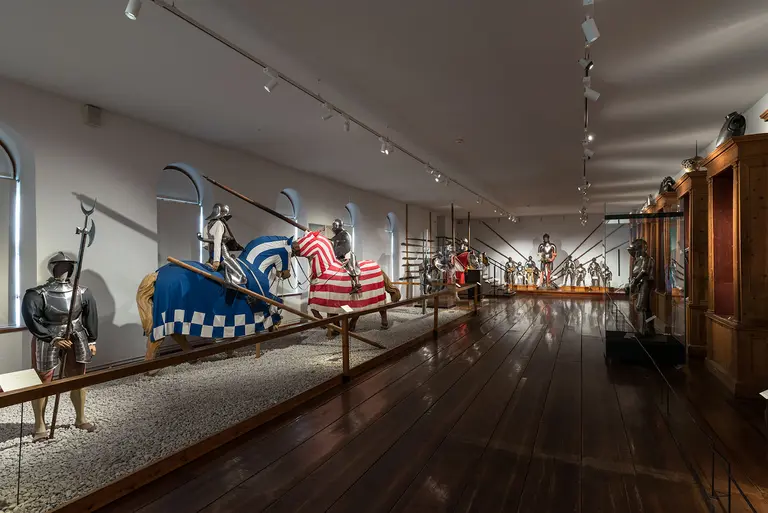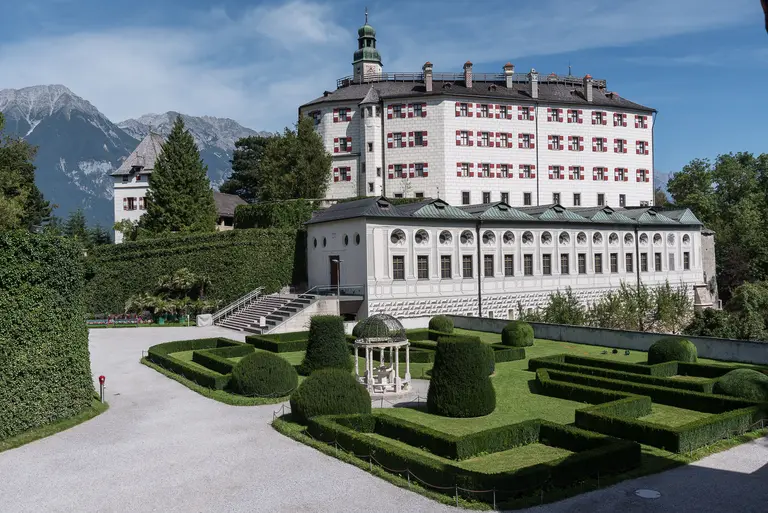The Skanderbeg Helmet
The helmet is a fragment of an Italian sallet from the late fifteenth century; the inscription (in late-Gothic minuscles and divided by six flower rosettes) on the circumferential copper band reads ‘Inperatorebt’.
‘Inperator’ (or ‘Imperator’) is an ancient honorary title that derives from the Latin imperare (to rule, command). In the Middle Ages, it was primarily used for emperors and kings.
A head of a goat made of gilt copper functions as the helmet’s crest. The goat’s eyes were presumably once inlaid with coloured glass or stones.
The Skanderbeg helmet, 2nd half of the 15th century, Kunsthistorisches Museum Vienna, Imperial Armoury, inv. A 127 © KHM-Museumsverband

